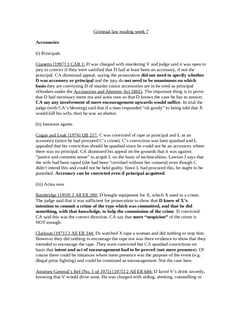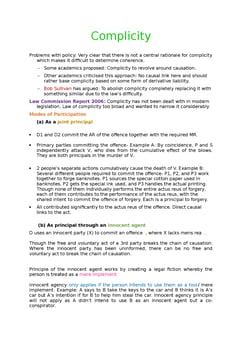R v Savage, Parmenter [1992] 1 AC 699 HL
Judgement for the case R v Savage, Parmenter
Table Of Contents
KEY POINTS
Proving intent or foresight is vital in harm-related cases, especially for minor harm, ensuring just outcomes. This issue is most prominent in assault cases with bodily injury, sparking a debate over the burden of proof, emphasizing precise legal interpretation and stringent evidence in criminal proceedings.
In specific contexts like Sections 20 and 47 of the 1861 Act, the verdict for assault causing bodily harm offers flexibility, maintaining fairness, and protecting the rights of all parties. These principles underscore the significance of intent, foresight, and legal interpretation in harm-related criminal cases.
FACTS
Two appeals were combined in this case, both involving the mental element in offenses under the Offences against the Person Act 1861: Section 20 (unlawful wounding or grievous bodily harm) and Section 47 (assault causing actual bodily harm).
On October 3, 1989, Mrs. Savage was convicted of unlawfully wounding Miss Beal in Durham. The incident occurred on March 31, 1989. She received 120 hours of community service. Mrs. Savage had tension with Miss Beal, her husband's former partner, despite never having met her before.
In a pub encounter, Mrs. Savage greeted Miss Beal with "Nice to meet you, darling," and then threw her glass's contents at her. Unfortunately, the glass broke, causing a cut on Miss Beal's wrist. The jury concluded that Mrs. Savage either deliberately threw both the beer and glass or accidentally dropped the glass while intentionally throwing the beer.
The Court of Appeal emphasized that "maliciously" is subjectively interpreted, and the jury's instruction that it meant deliberate harm to Tracey Beal was incorrect. Moreover, the jury wasn't properly guided in considering whether Mrs. Savage foresaw harm beyond wetting Miss Beal with beer.
Consequently, the Court of Appeal overturned the verdict and considered an alternative verdict.
JUDGEMENT
Unlawful wounding or grievous bodily harm under Section 20A of the Offences against the Person Act 1861, the Crown must prove either the defendant's intent to cause harm or their actual foresight of harm, not just that they should have foreseen harm. Minor harm is sufficient for a guilty verdict, and specific intent for severe harm is not required.
For assault causing actual bodily harm under Section 47B, it's enough to show the defendant committed an assault resulting in actual bodily harm. The Crown need not prove specific intent for harm or recklessness about harm occurring.
A guilty verdict for assault causing actual bodily harm can be an alternative in cases initially charged with unlawful wounding (Section 20), providing flexibility in the court's decisions based on the evidence and circumstances.
COMMENTARY
This case addresses critical issues in criminal law, focusing on the mental elements required for offenses under the Offences against the Person Act of 1861, Sections 20 and 47, involving unlawful wounding and assault causing harm.
Key questions revolve around whether the Crown must prove the defendant's intent or foresight of harm and if foreseeability alone suffices. Moreover, there's debate about the significance of intended or foreseen harm and whether specific intent for severe harm is necessary.
In this case, Mrs. Savage was convicted of unlawfully wounding Miss Beal, stemming from prior tensions. During a pub encounter, Mrs. Savage's actions caused Miss Beal injury from a broken glass, raising intent and foreseeability questions.
The Court of Appeal clarified the standards: For unlawful wounding or grievous bodily harm under Section 20A, the Crown must prove either intent or actual foresight of harm, not just foreseeability. Minor harm suffices for guilt without requiring specific intent for severe harm.
In contrast, for assault causing actual bodily harm under Section 47B, proving the defendant committed an assault resulting in actual bodily harm is enough. The Crown need not establish specific intent for harm or recklessness.
The case underscores legal flexibility, allowing a guilty verdict for assault causing actual bodily harm as an alternative in initial unlawful wounding cases. This accommodates evidence and circumstances in court decisions.
ORIGINAL ANALYSIS
Savage (S) had thrown a glass of beer over a woman and the glass broke cutting the victim, leading S to be convicted of wounding contrary to s.20 1861 Act.
CA upheld conviction. Parmenter (P) was found guilty of wounding his baby son and the trial judge directed that he merely needed to have foreseen some harm.
CA allowed P’s appeal, saying that the question was not whether he did in fact see harm, but whether he ought to have foresee harm.
HL allowed the crown’s appeal in P, but dismissed S’s appeal in the first case.
Opinions
Lord Ackner says that “maliciously” implies merely some foresight of wounding was necessary, not actual foresight of wounding itself. This was established in Mowatt.
Similarly Roberts (above) shows that one does not have to intend a result in the same category of the actual result (Roberts did not necessarily intend actual bodily harm, though this is what he foresaw and what could reasonably be foreseen.
Cunningham establishes that foresight of the possibility of harming someone was enough to convict on the basis of endangering life (even though this was not intended).
RELATED CASES
For Further Study on R v Savage, Parmenter

Criminal Law notes fully updated for recent exams at Oxford and Cambrid...
Need instant answers? Our AI exam tutor is here to help.
Ask questions 🙋 Get answers 📔 It's simple 👁️👄👁️
Our AI is educated by the highest scoring students across all subjects and schools. Join hundreds of your peers today.
Get StartedSimilar Cases
Related Product Samples
These product samples contain the same concepts we cover in this case.
| Criminal Law | Homicide Notes (20 pages) |
| Criminal Law | Mens Rea — Intention Recklessness And Negligence Notes (24 pages) |
| Criminal law | Offences Against The Person Notes Real Notes (28 pages) |

 Since 2010, Oxbridge Notes has been a trusted education marketplace, supplying high-quality materials from top achievers at universities like Oxford, Cambridge, LSE, Harvard, and Yale.
Since 2010, Oxbridge Notes has been a trusted education marketplace, supplying high-quality materials from top achievers at universities like Oxford, Cambridge, LSE, Harvard, and Yale.